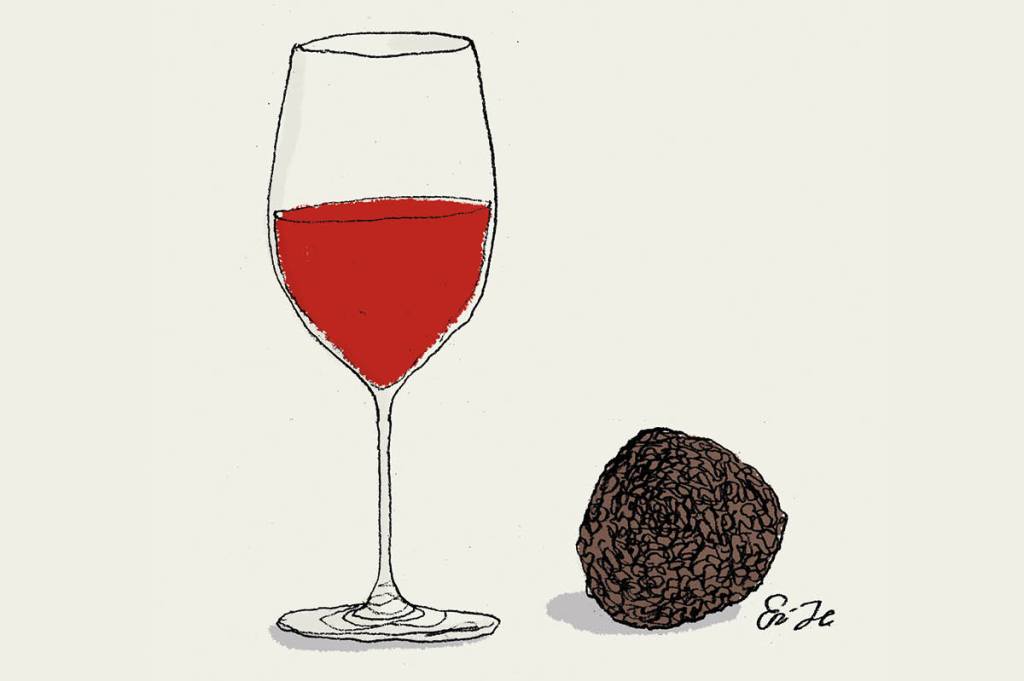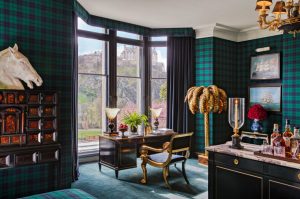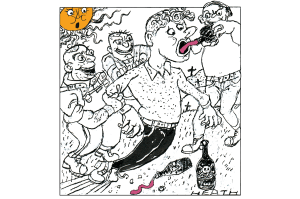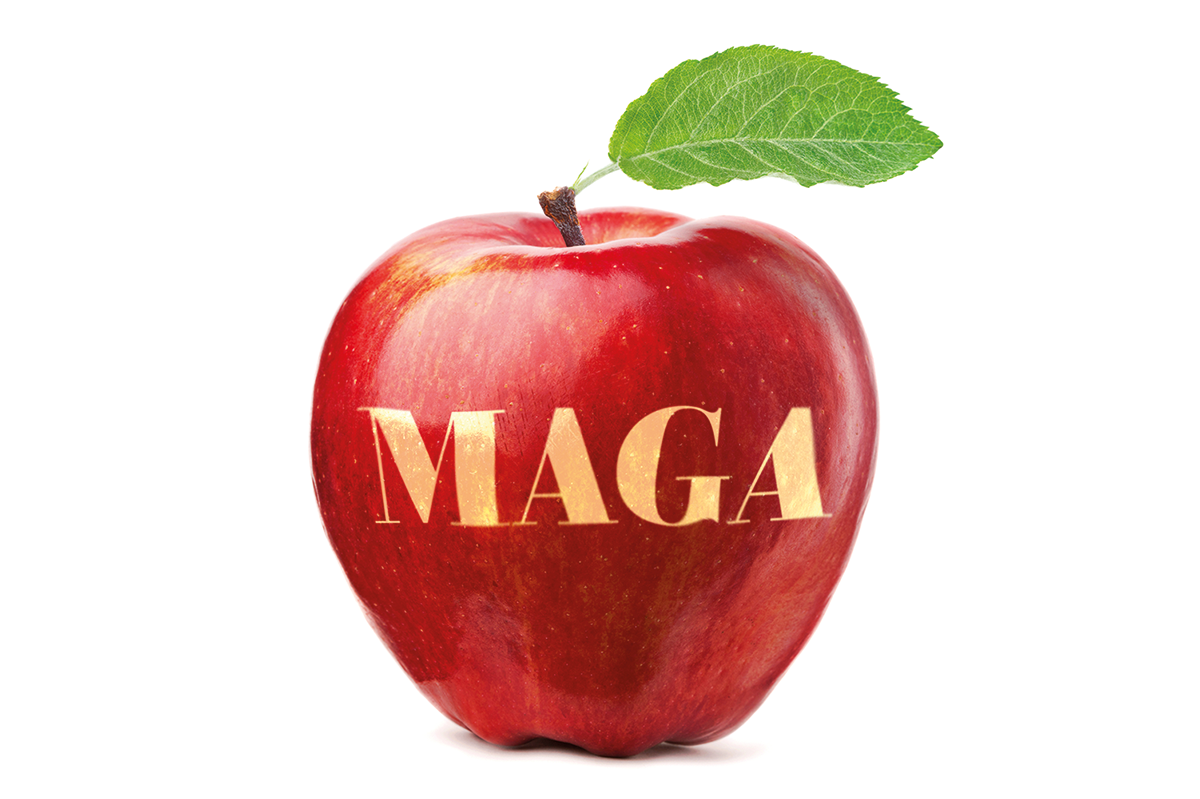Regular readers may recall the trip we took to St. Émilion on the right bank of the Gironde-Dordogne river system a while back. It being truffle season, some enterprising chaps organized a dinner revolving around that delectable fungus and one of the very best wines from St. Émilion, Château Angélus, a Premier Grand Cru Classé A, and its second label, Carillon d’Angélus. Note the bell motif: a single bell features on the label of Château Angélus, three on that of Carillon d’Angélus, so named because in the vineyards one can hear the bells from three neighboring churches ringing out that prayer to Mary (Angelus Domini nuntiavit Mariæ…) in the morning, noon and around vespers.
Those of you who were along for our last foray to St. Émilion will recall that its classification system is very different from that in Médoc and Graves. There, the grades handed out in 1855 have remained pretty stable. A few wines have dropped a grade, and in 1973 Château Mouton Rothschild was elevated from a “second” to a “first growth,” taking its place alongside Château Lafite and Latour in Pauillac, Château Margaux in Margaux, and Château Haut-Brion in Graves. For the most part, though, the eminences who decide these things seem to have taken a page from Lord Falkland: when it is not necessary to change, it is necessary not to change.
Things are very different on the right bank. The top wines there are not categorized as “first growth,” “second growth” and so on, but as “Grand Cru” (there are about sixty of these), “Premier Grand Cru Classé B” (of which there are a dozen) and “Premier Grand Cru Classé A” (there are only four). The classification has been revised multiple times since being introduced in the 1950s, most recently in 2012 when Château Angélus was elevated from Classé B to Classé A. Back in 1996, it had been elevated from “Grand Cru” to “Premier Grand Cru Classé B.” Some cynical observers point out that the owner of Angélus, Hubert de Boüard, has long been on the committee overseeing the recategorization. About such insinuations I tend to follow the practice of Francis Urquhart in House of Cards: “You may say so; I couldn’t possibly comment.” In any event, on the appointed evening, a group of us serious thinkers left behind the dust of commerce and the sweat of toil to assemble in a semi-secure, not-to-be-disclosed location to feast and frolic. My friends and I took the precaution of beginning with a chaste palate-cleanser of Billecart-Salmon Rosé Champagne (a bottle of which can be yours for about $80). That was the only moment innocent of truffles.
The official festivity began at 7 p.m. with cocktails, oysters “à la truffe,” truffle mousse foie gras, and a “mini-croq” featuring prosciutto and truffle. No Lagotti Romagnolo, the famous Italian “truffle dogs,” were in evidence that evening. A pack of them must have been snuffling away on our behalf, however; there were an abundance of black truffles, sliced, diced, grated, peeled, raw, sautéed and sandwiched neatly between rich veins of brie de meaux.
The repast itself began with a “perfect egg” (i.e., poached) supported by black truffle peelings, bacon and a parmesan emulsion. Thus was the stage set for the 2012 and 2015 Carillon d’Angélus. Right bank wines are famed for the delicacy and perfume of their nose. These did not disappoint. The Merlot-Cabernet Franc blend was a deep, almost fathomless red boasting floral notes, sturdy fruit and surprising tannins. They were not, to be frank, knock-your-socks-off wines, but they were delectable in a self-effacing, quietly confident way. You can find the 2012 for about $140 or $150, the 2015 for a bit less.
We all thought of that first course as reveille, a wake-up call, a gentle tocsin reminding us to pay attention. What came next was the main attraction. The roasted veal tenderloin entered with an entourage of artichokes, autumn root vegetables and potato tots. Naturally, there were also truffles galore and a sauce featuring, yes, truffles. All this was the supporting cast for the magnificent 2016 Château Angélus counterpointed with an understudy, the 2011 vintage, which was good but, between us, not superlative. It looks like the 2016 will set you back a good $400, the 2011 maybe $20-30 less. If you have a choice, go for the 2016.
But we weren’t quite finished. The denouement was that truffle-decorated brie de meaux I mentioned. It was a bit rich after the veal, but we put up with it for the sake of the star of the evening, the 2010 Château Angélus. The 2016 was complex, open and delicious, the 2010 added layers of complex fruit and an almost oriental tapestry of scents and adumbrations. It was a magnificent wine, fully mature, but fresh, nubile, ensorcelling. We all appreciated the wit who made truffles the occasion for this symposium.
This article was originally published in The Spectator’s March 2024 World edition.


























Leave a Reply